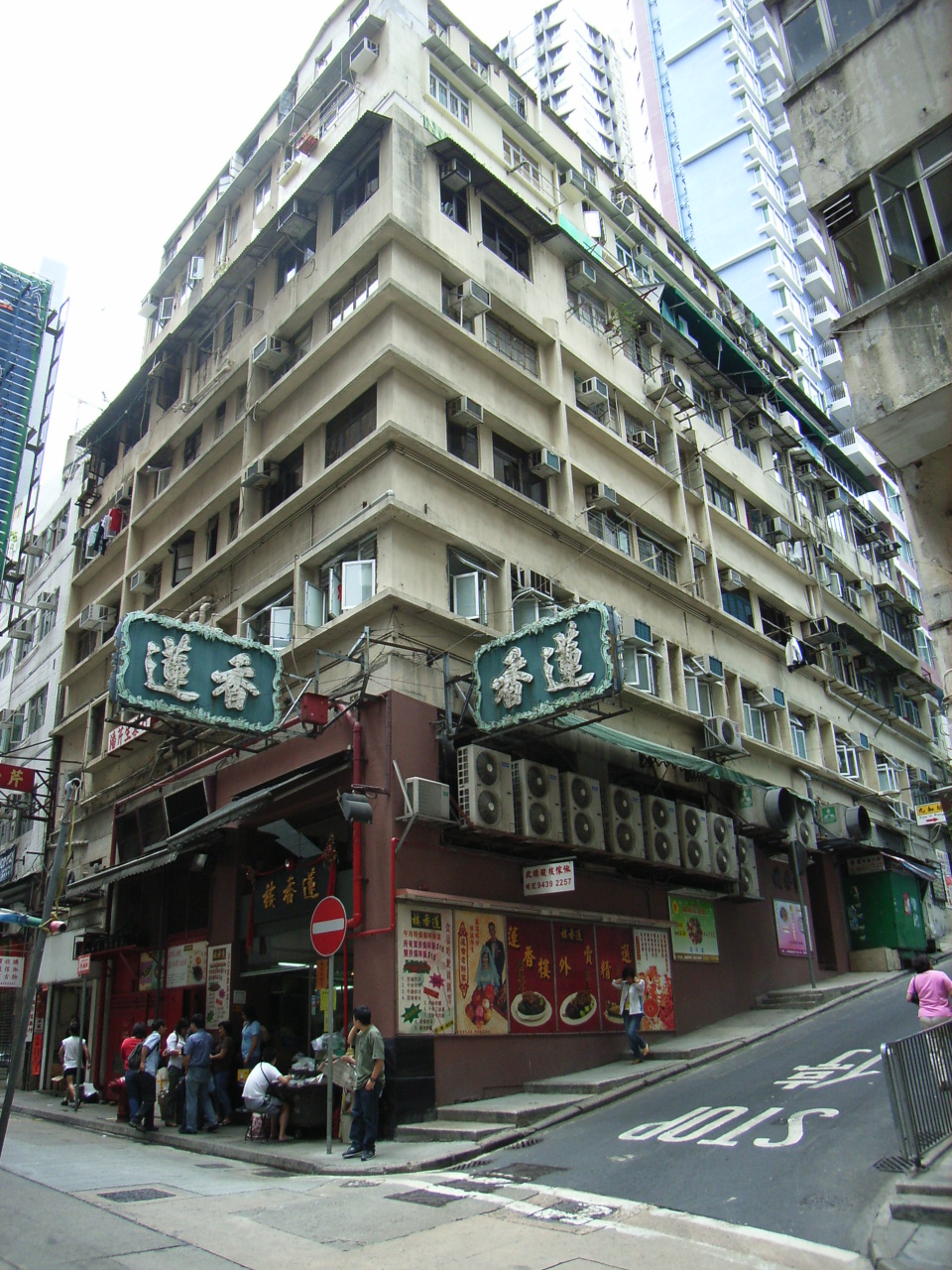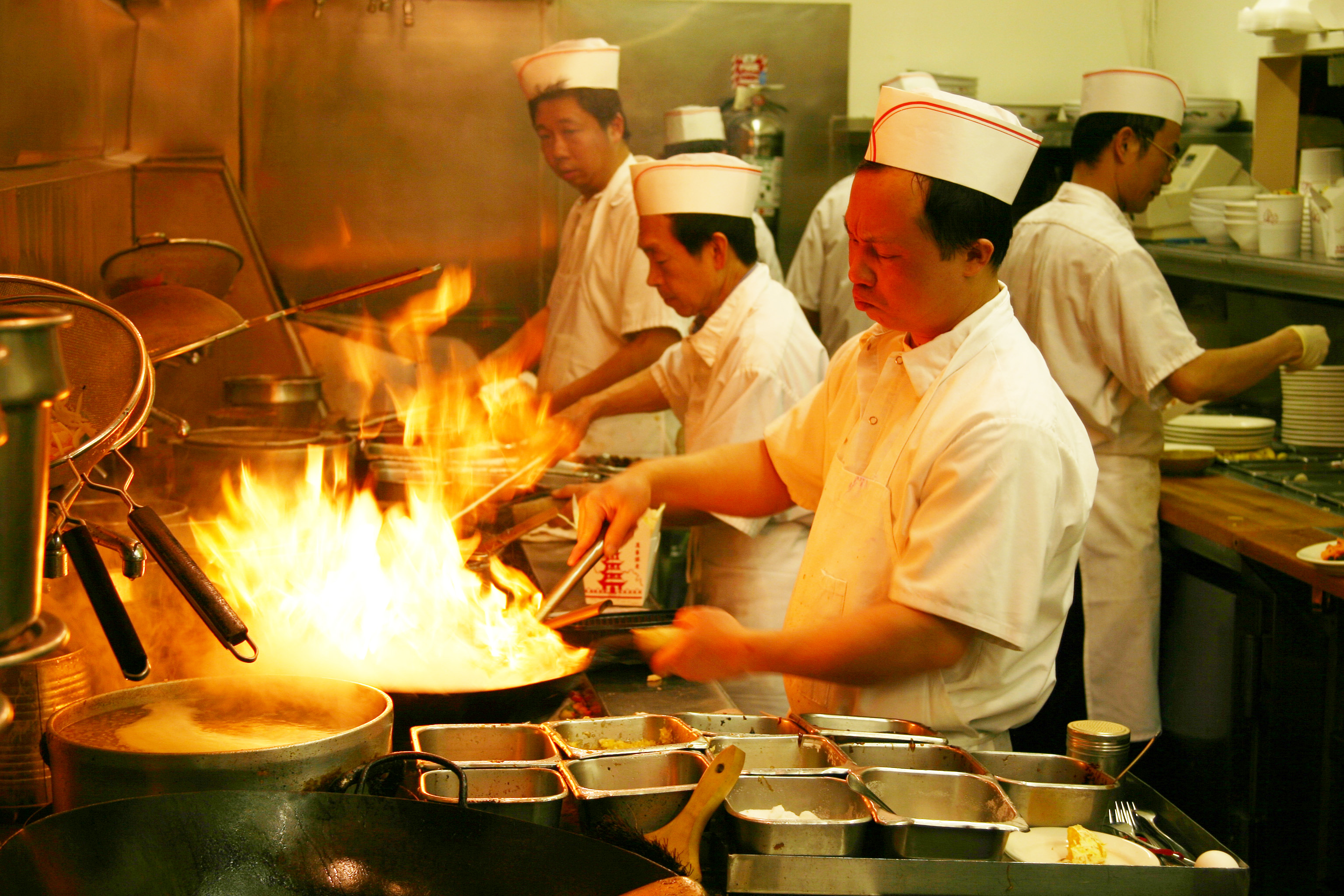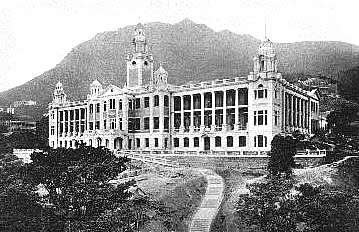|
Aberdeen Street
Aberdeen Street is a border street dividing Sheung Wan and Central on Hong Kong Island, Hong Kong. It ascends from Queen's Road Central to Caine Road in Mid-Levels. The street is named after George Hamilton-Gordon, 4th Earl of Aberdeen, Foreign Secretary at the time of the cession of Hong Kong Island to the United Kingdom in 1842. History In the early days after 1841, while Choong Wan was planned to be business centre of Victoria City and an area of Westener population, Chinese population was removed from Choong Wan to the area around Tai Ping Shan Street in Sheung Wan and Sheung Wan became the area of Chinese population. South of Hollywood Road was the Alice Memorial Hospital and the College of Medicine where Sun Yat-sen graduated with distinction in 1892. After the college was merged into the University of Hong Kong, the hospital was also moved to Bonham Road and renamed to Nethersole Hospital. After reclamation of island north, Aberdeen Street was extended in th ... [...More Info...] [...Related Items...] OR: [Wikipedia] [Google] [Baidu] |
George Hamilton-Gordon, 4th Earl Of Aberdeen
George Hamilton-Gordon, 4th Earl of Aberdeen, (28 January 178414 December 1860), styled Lord Haddo from 1791 to 1801, was a British statesman, diplomat and landowner, successively a Tory, Conservative and Peelite politician and specialist in foreign affairs. He served as Prime Minister from 1852 until 1855 in a coalition between the Whigs and Peelites, with Radical and Irish support. The Aberdeen ministry was filled with powerful and talented politicians, whom Aberdeen was largely unable to control and direct. Despite his trying to avoid this happening, it took Britain into the Crimean War, and fell when its conduct became unpopular, after which Aberdeen retired from politics. Born into a wealthy family with largest estates in Scotland, his personal life was marked by the loss of both parents by the time he was eleven, and of his first wife after only seven years of a happy marriage. His daughters died young, and his relations with his sons were difficult. He travelled extens ... [...More Info...] [...Related Items...] OR: [Wikipedia] [Google] [Baidu] |
Tai Ping Shan Street
Tai Ping Shan Street is a street marking the early colonial history in Hong Kong. Located at the north slope of Victoria Peak in Sheung Wan, the street starts east from a Ladder streets, ladder street at the junction with Bridges Street and end west in Po Yan Street near Tung Wah Hospital. The street runs parallel to Hollywood Road. Today, Tai Ping Shan Street is well known for its contemporary art, with plenty of pop-up galleries and other specialty retailers offering their wares to shoppers passing by. History ''Tai Ping Shan'' () is an alternative name to Victoria Peak, and literally means "Peace Hill". After the cession of Hong Kong Island from Qing Dynasty, Qing China to the United Kingdom, British in the 1840s, British forces made garrison here and later the government relocated all Chinese residents in Central, Hong Kong, Choong Wan to the area surrounding Tai Ping Shan Street. The Chinese writer Wang Tao (19th century), Wang Tao wrote in 1860 that the street was Pro ... [...More Info...] [...Related Items...] OR: [Wikipedia] [Google] [Baidu] |
Lan Kwai Fong
Lan Kwai Fong (often abbreviated as LKF) is a small square of streets in Central, Hong Kong. The area was dedicated to hawkers before the Second World War, but underwent a renaissance in the mid-1980s. It is now a popular expatriate haunt in Hong Kong for drinking, clubbing and dining. The street Lan Kwai Fong is L-shaped with two ends joining with D'Aguilar Street. Location Lan Kwai Fong as an area is defined by D'Aguilar Street and the smaller lane, Lan Kwai Fong, an L-shaped, cobble-stoned lane. Both streets turn 90 degrees to form a rectangle. It is near the Mid-Levels. Its eating and drinking establishments are considered upmarket in price and the area is also considered a tourist spot. From the west side of the rectangle, Wo On Lane and Wing Wah Lane extend to host several more spots for drinks and food. The area arguably extends to Wellington Street and Wyndham Street, through to the Hong Kong Fringe Club. It is also home to a small number of art galleries. History ... [...More Info...] [...Related Items...] OR: [Wikipedia] [Google] [Baidu] |
Cantonese Cuisine
Cantonese or Guangdong cuisine, also known as Yue cuisine ( or ) is the cuisine of Guangdong province of China, particularly the provincial capital Guangzhou, and the surrounding regions in the Pearl River Delta including Hong Kong and Macau.Hsiung, Deh-Ta. Simonds, Nina. Lowe, Jason. 005(2005). The food of China: a journey for food lovers. Bay Books. . p17. Strictly speaking, Cantonese cuisine is the cuisine of Guangzhou or of Cantonese speakers, but it often includes the cooking styles of all the speakers of Yue Chinese languages in Guangdong. Scholars categorize Guangdong cuisine into three major groups based on the region's dialect: Cantonese, Hakka and Chaozhou cuisines. The Teochew cuisine and Hakka cuisine of Guangdong are considered their own styles, as is neighboring Guangxi's cuisine despite eastern Guangxi being considered culturally Cantonese due to the presence of ethnic Zhuang influences in the rest of the province. Cantonese cuisine is one of the Eight Cu ... [...More Info...] [...Related Items...] OR: [Wikipedia] [Google] [Baidu] |
Dim Sum
Dim sum () is a large range of small Chinese dishes that are traditionally enjoyed in restaurants for brunch. Most modern dim sum dishes are commonly associated with Cantonese cuisine, although dim sum dishes also exist in other Chinese cuisines. In the tenth century, when the city of Canton (Guangzhou) began to experience an increase in commercial travel, many frequented teahouses for small-portion meals with tea called ''yum cha'', or "drink tea" meals. ''Yum cha'' includes two related concepts. The first is " jat zung loeng gin" (), which translates literally as "one cup, two pieces". This refers to the custom of serving teahouse customers two pieces of delicately made food items, savory or sweet, to complement their tea. The second is ''dim sum'' () and translates literally to "touching heart", the term used to designate the small food items that accompanied the tea drinking. Teahouse owners gradually added various snacks called "dim sum" to their offerings. The practice ... [...More Info...] [...Related Items...] OR: [Wikipedia] [Google] [Baidu] |
Lin Heung Tea House
Lin Heung Tea House () was a two-storey Chinese restaurant located within the Tsang Chiu Ho Building () at 160-164 Wellington Street, at the corner of Aberdeen Street, in Central, Hong Kong. The 100 year old institution closed its doors on 09 August 2022 History In 1889, Lin Heung Tea House was first founded in Guangzhou, China. At the beginning of the 20th century, there was a proliferation of tea houses in China. In 1926, two branches were opened in Hong Kong: one in Mong Kok, Kowloon and another in Central, Hong Kong Island. In 1980, Lin Heung Tea House moved to the current location and has been located there ever since. Lin Heung Tea House is famous for its authentic and traditional Chinese dim sum, attracting international newspapers coverage including features from CNN and TIME magazine. Lin Heung Tea House has been featured in several films, including ''The Longest Summer'' (1998) and ''In the Mood for Love'' (2000). 2022, 8 Aug, Lin Heung Tea House announced its clo ... [...More Info...] [...Related Items...] OR: [Wikipedia] [Google] [Baidu] |
Wellington Street, Hong Kong
Wellington Street () is a one-way street located in Central and Sheung Wan, Hong Kong. Named after Arthur Wellesley, 1st Duke of Wellington, it stretches from Wyndham Street to Queen's Road Central. The two sides of street is a mosaic of old and new buildings. Varieties of trades can be found on the street level. Street markets can be found in the adjacent lanes. Location The street is located at the bottom of Victoria Peak on Hong Kong Island and next to Queen's Road Central which serves as one of the main roads through the central business district. Wellington Street ends westwards at the end of Central and the beginning of Sheung Wan (the border between Central and Sheung Wan is marked by Aberdeen Street). History The old Roman Catholic cathedral—the first Catholic church in Hong Kong—was built in 1843 at the junction of Pottinger Street and Wellington Street and was destroyed in a fire in 1859. It was rebuilt with iconic twin steeples at its facade. However, space cons ... [...More Info...] [...Related Items...] OR: [Wikipedia] [Google] [Baidu] |
Ladder Streets
Ladder streets are narrow streets in Hong Kong comprising steps. Most are found between Central, Hong Kong, Central and Sheung Wan and Mid-Levels on Hong Kong Island, from Queen's Road Central, through Hollywood Road and a few other cross streets, to Caine Road at the Mid-Levels. Other ladder streets exist outside of the immediate Mid-Levels area, such as Sands Street in Kennedy Town. Note that there is indeed a street named Ladder Street, composed entirely of stone steps, in Sheung Wan. While some ladder streets are made only of traditional steps, some at a moderate incline have portions that could be traversed with a rickshaw or cart. These portions had raised stones perpendicular to the street at regular intervals acting like a ratchet so that carts and rickshaws could be easily stopped and parked. This kind of paving can be found on Pottinger Street. The Duddell Street steps were declared a monument by the Antiquities and Monuments Office. [...More Info...] [...Related Items...] OR: [Wikipedia] [Google] [Baidu] |
Street Market
A marketplace or market place is a location where people regularly gather for the purchase and sale of provisions, livestock, and other goods. In different parts of the world, a marketplace may be described as a '' souk'' (from the Arabic), '' bazaar'' (from the Persian), a fixed '' mercado'' (Spanish), or itinerant ''tianguis'' (Mexico), or ''palengke'' (Philippines). Some markets operate daily and are said to be ''permanent'' markets while others are held once a week or on less frequent specified days such as festival days and are said to be ''periodic markets.'' The form that a market adopts depends on its locality's population, culture, ambient and geographic conditions. The term ''market'' covers many types of trading, as market squares, market halls and food halls, and their different varieties. Thus marketplaces can be both outdoors and indoors, and in the modern world, online marketplaces. Markets have existed for as long as humans have engaged in trade. The earlie ... [...More Info...] [...Related Items...] OR: [Wikipedia] [Google] [Baidu] |
Land Reclamation In Hong Kong
The reclamation of land from the ocean has long been used in mountainous Hong Kong to expand the limited supply of usable land with a total of around 60 square kilometres of land created by 1996. The first reclamations can be traced back to the early Western Han Dynasty (206 BC – 9 AD), when beaches were turned into fields for salt production. Major land reclamation projects have been conducted since the mid-19th century.EIA: A survey report of Historical Buildings and Structures within the Project Area of the Central Reclamation Phase III Chan Sui San Peter for the HK Government, February 2001 Projects Bonham Strand Praya Re ...
|
Bonham Road
Bonham Road is a main road in West Mid-Levels, Hong Kong Island in Hong Kong, running mainly East-West. The road connects Pok Fu Lam Road in the west, near the University of Hong Kong, and Caine Road in the east, at the junction with Hospital Road and Seymour Road. It was named after Sir George Bonham, the third Governor of Hong Kong. It was renamed Nishi-Taisho Dori (西大正通) during Japanese occupation of Hong Kong. Features Several historical buildings are located on the road, including Fung Ping Shan building, Hung Hing Ying building and the Main Building of The University of Hong Kong. There are also a few well known schools located on the road, including King's College, St. Paul's College, Hong Kong, St. Stephen's Girls' College, St. Clare's Primary School, Bonham Road Government Primary School, Chinese Rhenish Church Hong Kong which is there in the 19th century. Bonham Road Flyover Bonham Road Flyover is a one-way, single-lane flyover allowing vehicles travell ... [...More Info...] [...Related Items...] OR: [Wikipedia] [Google] [Baidu] |
University Of Hong Kong
The University of Hong Kong (HKU) (Chinese: 香港大學) is a public research university in Hong Kong. Founded in 1887 as the Hong Kong College of Medicine for Chinese, it is the oldest tertiary institution in Hong Kong. HKU was also the first university established by the British in East Asia. As of December 2022, HKU ranks 21st internationally and third in Asia by '' QS'', and 31st internationally and fourth in Asia by ''Times Higher Education''. It has been ranked as the most international university in the world as well as one of the most prestigious universities in Asia. Today, HKU has ten academic faculties with English as the main language of instruction. The University of Hong Kong was also the first team in the world to successfully isolate the coronavirus SARS-CoV, the causative agent of SARS. History Founding The origins of The University of Hong Kong can be traced back to the Hong Kong College of Medicine for Chinese founded in 1887 by Ho Kai later known a ... [...More Info...] [...Related Items...] OR: [Wikipedia] [Google] [Baidu] |








